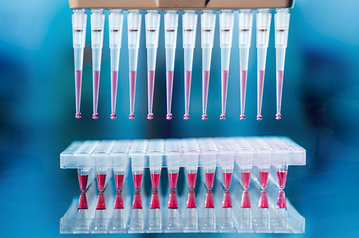Innovation-as-a-Service business model will boost growth opportunities, finds Frost & Sullivan
Santa Clara, Calif. – February 4, 2019 – The rising shortage of skilled labor, need to optimize lab space, and the demand for advanced testing technologies are making a strong case for the adoption of innovative functional consumables. Vendors need to develop a new generation of miniaturized and “complex” consumables that can simplify instrument functioning. Moreover, consumables need to remain apace with the rest of the healthcare industry and offer smart features with patient-centric connected solutions.
 “This can be achieved through harmonized integration of innovation on a common platform and companies can thrive by offering this Innovation-as-a-Service. Larger companies need to partner with start-ups to harness their capabilities in optics, fluidics, or electronics to deliver a truly unique solution,” said Khushbu Jain,Research Analyst, Transformational Health. “As the diagnostic instrument efficiency improves and lifecycle extends beyond an average of five to seven years, the diagnostic industry will follow the same path as automobiles, industrial machinery, and information technology industry, where companies will derive four to five times larger value in the high-margin aftermarkets than the original equipment businesses. As a result, the market was valued at $27.38 billion in 2018 and is expected to reach $38.36 billion in 2023.”
“This can be achieved through harmonized integration of innovation on a common platform and companies can thrive by offering this Innovation-as-a-Service. Larger companies need to partner with start-ups to harness their capabilities in optics, fluidics, or electronics to deliver a truly unique solution,” said Khushbu Jain,Research Analyst, Transformational Health. “As the diagnostic instrument efficiency improves and lifecycle extends beyond an average of five to seven years, the diagnostic industry will follow the same path as automobiles, industrial machinery, and information technology industry, where companies will derive four to five times larger value in the high-margin aftermarkets than the original equipment businesses. As a result, the market was valued at $27.38 billion in 2018 and is expected to reach $38.36 billion in 2023.”
Frost & Sullivan’s recent analysis, Growth Opportunities in Functional Consumables Aftermarket, Forecast to 2023, presents strategic imperatives to develop a successful go-to-market strategy in the emerging B2C dynamics. The study also identifies the challenges to existing functional consumables and provides a framework for future innovation to stay ahead of the curve. Additionally, the study benchmarks some of the innovations brought to market by companies like Stratec, Tecan, Bio-Rad and Alere. Lastly, it conducts revenue and geographical market analyses of the European Union, North America, and Asia-Pacific, and examines the purchasing trends and technological demands in each region.
For further information on this analysis, please visit: http://frost.ly/337.
“Biosensor technology-enabled consumables, consumables with preloaded reagents, and microfluidic components with tolerance as low as ±1 micron are becoming the new design norm,” noted Jain. “Vendors will also gain a significant competitive edge by creating a one-stop shop with bundled services covering instrument repair and maintenance, consumables, disposables, and automation solutions for all instruments, regardless of the manufacturer.”
Successful consumable developers will make the most of the growth opportunities provided by:
- Designing highly customized chips and parts, and making use of newer materials to support the creation of portable and simplified instruments.
- Embedding smart functional consumables in disposable self-testing kits for improved connectivity of test results with an electronic interface.
- Investing in brand-agnostic emerging markets like India and China, and partnering with regional leaders to bring customized low-cost alternatives.
- Building capabilities for delivering high-precision consumables to small-scale research labs and commercial-scale central lab operations.
Growth Opportunities in Functional Consumables Aftermarket, Forecast to 2023 is part of Frost & Sullivan’s global Life SciencesGrowth Partnership Service program.
About Frost & Sullivan
For over five decades, Frost & Sullivan has become world-renowned for its role in helping investors, corporate leaders and governments navigate economic changes and identify disruptive technologies, Mega Trends, new business models and companies to action, resulting in a continuous flow of growth opportunities to drive future success. Contact us: Start the discussion.
Growth Opportunities in Functional Consumables Aftermarket, Forecast to 2023
ME1C-52
Contact:
Mariana Fernandez
Corporate Communications
T: +1 210 348 10 12





